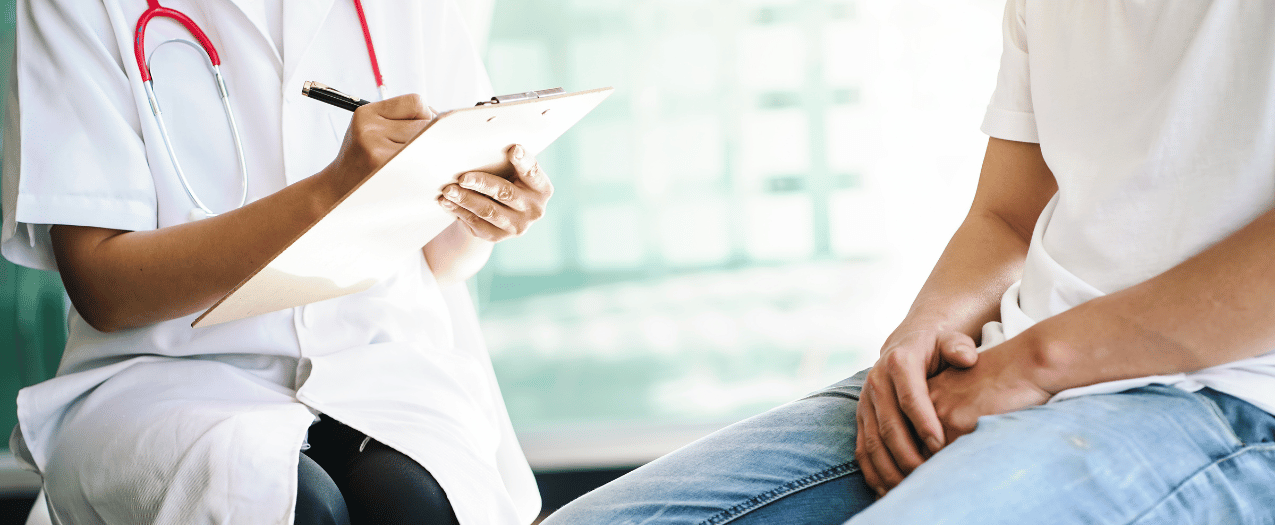
Due to anatomical differences, there are some problems that affect men more than women and some that affect women more than men. While men have to suffer from benign prostatic hyperplasia and the associated side effects, women are more prone to urinary incontinence and urinary tract infections. Urinary incontinence, the unintentional loss of urine, affects up to 50% of women at some point throughout their lifetime. It can cause a major disruption to your daily life and substantially lower your quality of living. While there are surgical options that will treat urinary incontinence, it’s always better to take a less-invasive, minimally risky course of treatment. Here is everything you need to know about treating urinary incontinence in women without surgery.
Understanding Urinary Incontinence in Women
There are millions of women around the United States that are currently suffering from some form of urinary incontinence (UI). It may happen as a result from exercising, coughing, laughing, or other strenuous activities. Others may experience UI by feeling a strong or sudden need to urinate immediately prior to leaking a moderate to large amount of urine. Regardless of the type of urinary incontinence you suffer from, it can have detrimental effects on your emotional wellbeing. The most common types of urinary incontinence that affect women include stress incontinence, urge incontinence (also known as overactive bladder), or mixed incontinence.
Women experience UI more often than men due to anatomical differences, pregnancy and childbirth, and menopause. Women can also experience UI from multiple sclerosis, stroke, birth defects, neurologic disorders or injuries, and the general act of getting older. If you think that you may be experiencing urinary incontinence, it’s important to talk to your doctor to get the proper diagnosis, treat any underlying conditions, and find a treatment plan that works for you.
Non-Surgical Urinary Incontinence Treatment Options for Women
Luckily, there are plenty of ways to go about treating urinary incontinence in women without surgery. You will work with your doctor to create a treatment plant. Treatments tend to start with lifestyle modifications and then you and your doctor will work down the list until you find something that works for you.
Scheduled Voiding
Scheduled voiding includes the practice of emptying your bladder at regular intervals throughout the day. This is done instead of relying on cues that indicate your bladder is full. Scheduled voiding can help you avoid episodes of urgency incontinence and can prevent any occurrences of stress leakage if you’re going to participate in physical activity. If you’re interested in trying scheduled voiding, start by using the bathroom every three to four hours throughout the day. If you have any questions about scheduled voiding, talk to your doctor.
Weight Loss
Obesity leads to a number of problems. It can increase your risk for chronic conditions and cancer along with the chances of developing urinary incontinence. Since urinary incontinence can often be a symptom of an underlying cause, losing weight is a great way to take healthy steps that can enhance all areas of your life. If you need help with your weight loss efforts, talk to your doctor about all of your options. By pairing nutrient-dense meals with increased physical activity, you’ll put yourself in a healthier position and reduce the likelihood of UI.
Fluid Management
Another option for non-surgical treatment for urinary incontinence is fluid management. By limiting or restricting your fluid intake throughout the day, you’ll experience fewer instances of leakage. Unless you’re participating in strenuous physical activity, about 64 ounces of all liquids will be sufficient. If you live in a particularly warm climate, or if you are working out vigorously, you’ll need to increase this amount. Pay attention to the concentration of your urine as an indication of your hydration levels. If you have problems with getting up at night to use the bathroom, try to eliminate any liquids about two to three hours before bed.
Increasing Fiber Intake
If you find yourself constipated, you may experience worsened UI symptoms. To avoid constipation, make sure that you’re eating enough fiber in your diet. Try to eat at least 30 grams of fiber per day, spread throughout meals, for the best results. If you continue to have problems with constipation, talk to your doctor about what you can do for relief.
Pelvic Floor Exercises
A great exercise for women to perform to help treat UI is pelvic floor exercises—commonly known as Kegels. To properly perform a Kegel, imagine that you’re trying to stop your urine flow. Tighten or contract the muscles that you would use to stop urinating and hold it for about five seconds, then relax for five seconds. Try to do about three sets of 10 every day with a goal to work your way up to holding for 10 seconds.
If you’ve never done Kegel exercises before, you might not know if you’re doing them effectively enough to benefit. There are options for supervised pelvic floor therapy—it’s like having a personal trainer for your Kegels. If you’re interested in learning more about supervised Kegel sessions, talk to your doctor for a recommendation.
Bladder Training
Bladder training is another option for those looking for urinary incontinence treatment without surgery. Bladder training works to retrain your bladder in an effort to hold more urine. It includes scheduled voiding alongside specific strategies to help control any urges. Talk to your doctor about specific details as to what kind of bladder training works best for you. The goal is to start slowly and work your way up to exercise the muscle without excessive strain.
Topical Vaginal Estrogen
Women who are experiencing urinary incontinence near menopause may benefit from using a topical vaginal estrogen. Menopause can cause vaginal atrophy (dryness), which can contribute to worsened UI symptoms. This can also help with physical discomfort or painful intercourse due to dryness.
Vaginal Pessaries
There are certain devices that can be worn to help women who are experiencing urinary incontinence. A vaginal pessary is a flexible device that’s made of silicone. It’s meant to be worn in the vagina to help reduce or eliminate stress incontinence. It acts as support for the urethra and is comfortable for all day use. To make sure you’re maintaining good hygiene and reducing the risk of infection, it’s important to remove the pessary periodically to clean it with soap and water. You can usually go about a week or two in between cleanings and the device will need to be replaced every three to six months. If you notice any irritation, tell your doctor so you can work towards a more comfortable option.
Percutaneous Tibial Nerve Stimulation
This is a type of treatment that involves placing very thin needles near certain nerves in your body. The percutaneous tibial nerve is located near your ankle and is connected to nerves that affect your bladder. By stimulating this nerve, the goal is to improve your UI symptoms. You should not use this treatment if you have a pacemaker, are suffering from an infection of any kind, or you have severe swelling in or around your ankles.
Botox
While Botox is primarily used to treat signs of aging, it has also been shown to be an effective treatment option for women experiencing urinary incontinence. There are risks associated with this type of treatment, so talk to your doctor about all of the factors involved and see if you’re a good fit. Results from Botox to treat UI usually last about six months, sometimes longer, and can be repeated as needed. Overtime, there are cases where leakage in patients have been eliminated altogether.
Medication
Certain medications can be taken that help to block extra muscle contractions of an overactive bladder, limit the flow of urine by contracting bladder muscles, or strengthening the tissue that supports the bladder. The medication that your doctor will prescribe will depend on the type of urinary incontinence you’re suffering from. You can also receive certain medications for nocturia if you’re having trouble sleeping through the night.
If you don’t find success treating urinary incontinence with these non-surgical procedures and you don’t want to undergo surgery, you will need to consider wearing a pad or utilizing a portable toilet. Pads are not necessarily recommended as a treatment option for incontinence in women, but they are sometimes necessary to avoid accidents and improve your overall quality of life. Portable toilets can be utilized if you have problems with mobility and aren’t able to make it to the bathroom in a safe, timely manner. If you need any support or educational materials regarding urinary incontinence in women, the team at Byram Healthcare is here to help. We also carry a variety of incontinence products that can be discretely delivered to your door regularly.




